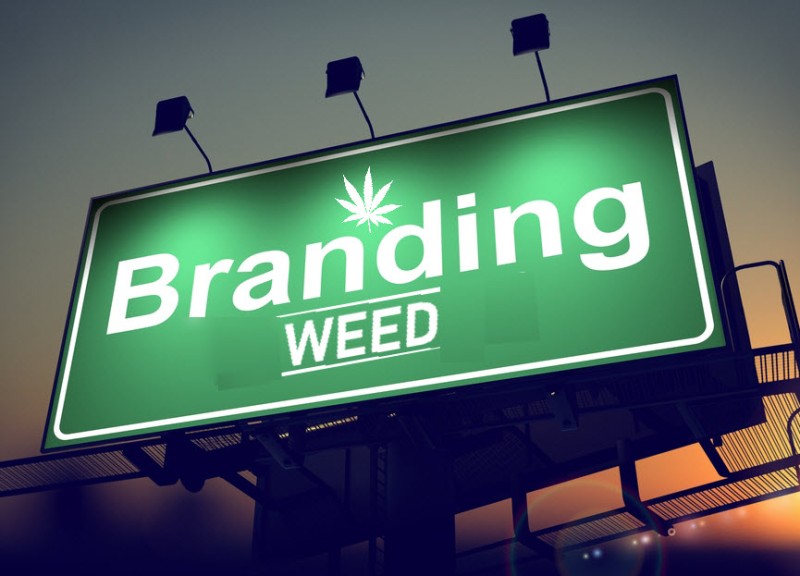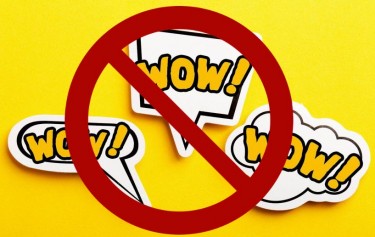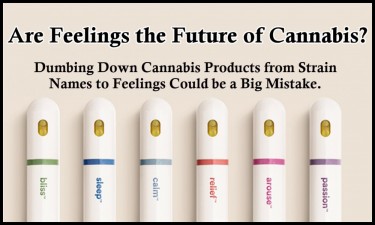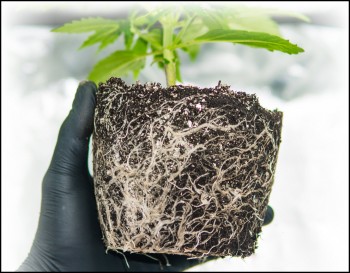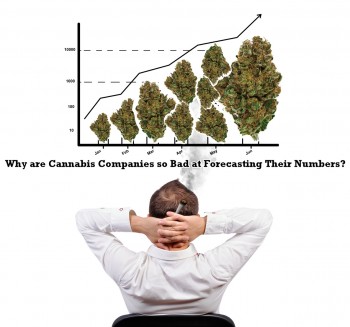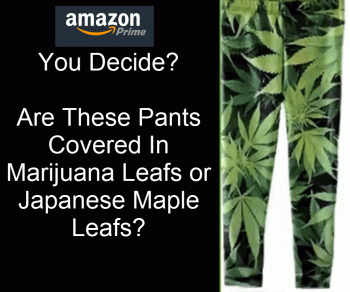The Cannabis Industry’s Billion Dollar Debate – Does Cannabis Branding Really Mater in the Future?
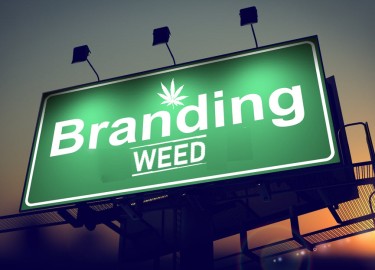
Billions are being bet on both sides of the cannabis branding debate, who is right will determine the winners and losers in future cannabis revenue game.
The message is clear from New York (Benzinga conference) to Las Vegas (MJ BIZ), with market saturation starting to take place in various cannabis industry niches and verticals, the need to improve margins and create profits is getting tighter. No bigger area shows this right now in the cannabis industry than the cannabis tech and websites companies getting bought up by the week at this point. Touching the consumer (and their data!) is clearly more valuable than touching the plant, at least for the future of cannabis investment. As more and more plants come online, literally, the race to margins compression on pricing has already begun in earnest out West, and will get very real when we see Federal legalization and THC can ship and cross a state line. Efficient markets will be created on pricing across the country.
In the wake of this “Wait, we can’t just raise prices forever since we are selling weed?”, MSOs all the way down to Mom-and-Pop dispensaries are trying to figure out a way to demand a higher price, and hence, keep their margins higher than a general leafy commodity should be, like kale and lettuce should be at. The resounding answer from companies and people who have invested billions in their brick and mortar stores and grows, the answer is “branding”.
The number one message every CEO of every MSO that presented at Benzinga Cannabis Conference in New York City last week was, “Our XYZ brand, house brand, reserve brand, are X amount better than other similar products on the market and consumers love our XYZ brand.”
Why are so many CEOs and COOs of big MSOs toughing branding as the future of their model and revenues? Why is every VC group toughing they have invested in the “best brands” and that in the future, this is a CPG game, and consumers will flock to a brand they “like, know, or trust”. The standard example as explained to me on why branding is the key is companies and brands like Coke, Cheerios, Scope, Hershey, etc. and that cannabis will eventually be a CPG model.
Let’s take a step back at the fundamental argument. Does branding matter in the end for a commodity-based product? Is cannabis branding a myth? Budweiser sells 98% of the beer in America because it is a value-based brand that delivers on the desired results that their consumers want for an acceptable price point. A six-pack of Budweiser gets the job done on a Friday night for a majority of Americans. Yes, some will buy more expensive beers or microbrews, but the volume and sales percentages will go with Bud and Bud Light due to price, effect, and ease of access to the product.
Do you know what lettuce brands are at the supermarket? Do you shop for tomatoes by brand or do you go and look at all the red tomatoes and pick out the ones that look ripe and may or may not be on sale that day?
On one side of the fence, many MSOs and invested VC’s are telling the world branding matters and brands are the future of cannabis. On the other side of the argument are digital tech guys and analytics guys saying that every survey ever done on consumer habits in Canada and North America shows that branding doesn’t matter to cannabis consumers that much. The most famous survey of Canadian consumers found out that most consumers can’t remember what they bought, what color package they bought, or how much they used. They do remember the price point and if the product achieved the results, they wanted for the price paid, ie, see the Budweiser example above.
So why are MSOs and invested VC’s pushing branding as the key to the future of cannabis sales and pitching the “cannabis is a simple CPG product”? One, they have no choice. They spent billions on setting up physical locations and marketing, so with more and more legal and illicit suppliers coming online selling the plant, they have to convince you “there weed is so much better” than the store or delivery servicing in the same area. As margins compress and prices eventually drop, the MSOs have Wall Street numbers to hit, so they have to cut costs and find revenue somewhere in their seed-to-sale ecosystem. You can only tweak lights and soil so much to increase efficiency, so where are the margins going to come from if the bottom-line pricing is collapsing.
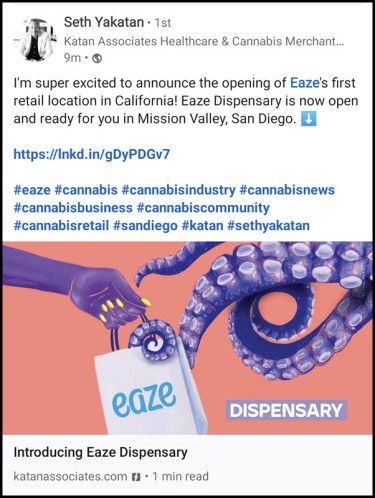
This is where the digital guys come in, the website and ordering menus, they have the consumer and data. They have the buyers, just not the end product, until recently. EAZE, a large digital platform, recently reversed the business model, and bough and MSO. Now data and traffic is buying the plant growers and sellers, not the other way around. EAZE recently opened their first dispensary under their tech brand name. Their data will tell you, at least until now, that branding has almost no impact on consumer choices right now when buying cannabis. Since Federal legalization is a way off, brands are forced to either be hyper local, ie only in California and Colorado, or get massive funding in order to expand into multiple states. And even then, it is usually taking the formula for the chocolate or edible they have, and white labeling it with a legal grower and manufacturer in that new state. THC cannot cross a state line literally touches and contorts every niche of the cannabis industry.
On one hand we have people vested with billions of dollars telling us branding, and their brand, whether it is Fuzion, Reserve, Stoic, Planta, etc is the best, and consumers will change buying patterns to come to their store just get that specific brand. When cannabis is at CVS and Walgreens behind the counter, are consumers making a special trip to a Curaleaf or MedMen to get their specific pre-roll brand house brand?
Did you buy Kirkland brand or every hear of them before Costco?
Do you buy tons of Kirland stuff now and not even blink an eye? Yes, will some brands survive as special, the way Hienz ketchup is “THE” ketchup to get, or Hellman’s Mayonnaise? Yes, but there are 5,000 brands vying for those 5 CPG spots that may exist in the future. There is Bud, Bud Light, Coors, Corona, Miller, Miller Light, Sam Adams, Heineken, and a few others, but the list is not 100 brands strong. Ask Headset.io, the leaders in brand analytics on the West Coast, how brands are dying and just trying to survive as they fight for shelf space at dispensaries and eyeballs online. One marketing avenue some companies have committed to is using feelings as marketing for certain cannabis products. Calm, Exite, Sleep, Energy, etc are now how products are being marketed, so marketing of the effects of the product only. Canndescent and Dosist are two brands pursuing this idea.
If we go down the road of cannabis like it is the wine industry, which is commonly used a cousin-like scenario of how Federal regulation and legalization will roll out, what are the big wine brands? Do people buy a Pinot based on price with the other Pinots on the shelf, or do they look for only FirstLeaf Pinot? Will they drive an extra 3 miles and take 20 minutes just to buy the FirstLeaf Pinot, or will they pick a from one of the ten Pinots on the shelf where they are at right now?
Time will tell if branding, or building a “like, know, or trust” with consumers will win out over time, cost, and convenience in a consumer’s day. To this point in history, no commodity-based product like cannabis, tomatoes, kale, beans, bacon, etc. has been successful using branding differentiation in a big way. Yes, you may like Oscar Meyet bacon, but if your store has 5 other brands, and not Oscar Meyer, are you picking one of the other brands or driving around to other stores to get that brand?
Be wary of the line “cannabis is a CPG, we know that it will be just like every other CPG out there”. Cannabis is a plant, it can grow in 8 to 12 weeks, indoor and outdoors. It does not have a propriety formula like Coke or Hienz Ketchup. It can be grown in the poorest countries in the world, as well as the most powerful and affluent countries. Cannabis is not your deodorant; it is not an “I only use Old Spice or Secret” type product. Blue Dream pre-rolls now available at CVS, Walgreens, True Greens Dispensary, and with online delivery ordering. If Curaleaf’s or Acreage’s house brand's White Widow better than someone else’s White Widow? As many in the industry will tell you, MSO weed is worse than other sellers because of the scale and size that they have do their grows and processing at, think McDonalds vs. your local pub burger. MSOs are desperate right now to convince you branding matters, and it is the future because if that is not true, their entire business model is in big trouble. You are just the most expensive tomato seller out there, but you have big overhead costs and big rents.
Remember, IPAs and microbrews are cool and get social media attention, but Budweiser products make up 95% of beer sales in the USA. Investor beware.
CANNABIS BRANDING STATS, READ MORE..
SURVEYS SAYS MARIJUANA BRANDING IS WORTHLESS, SO HOW CAN YOU SELL YOUR WEED?

